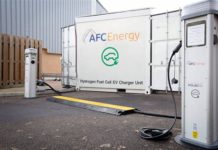 With the introduction of the Medium Combustion Plant Directive (MCPD), mission critical sites are facing ever more stringent emissions legislation. Craig Wilkins, from Cummins, explains how natural gas-powered generators play a vital role in energy efficiency for onsite generation, while lowering emissions…
With the introduction of the Medium Combustion Plant Directive (MCPD), mission critical sites are facing ever more stringent emissions legislation. Craig Wilkins, from Cummins, explains how natural gas-powered generators play a vital role in energy efficiency for onsite generation, while lowering emissions…
There is an increasing demand for gas generator sets as a base source of onsite generation, with the grid being used only as a backup. The key drivers leading to this shift are environmental considerations, the need for increased reliability and potential savings in energy costs.
Natural gas power has come of age. An uninterruptible supply of fuel, cleaner technology and a better total cost of ownership, all combine to present a viable option for power generation, especially when compared with diesel.
In the context of progressively stringent global emissions standards, including the Medium Combustion Plant Directive (MCPD) and the Specified Generator regulations, both of which seek to protect the environment by securing reductions of pollutants, modern gas-powered generators, such as Cummins ‘lean-burn’ HSK78G, are much cleaner than former diesel generators.
The HSK78G gas-powered generator is a flexible power solution for urban sites right through to heavy industry installations in the worst possible environments.
By using a lean burn generator set, air pollutant outputs will be lowered, including NOx, hydrocarbons (HC) carbon monoxide (CO) and particulate matter (PM), which will ensure compliance with emission regulations.
Emission levels can be reduced because it uses twice as much air in the fuel/air mix than is required for total burn, which lowers burn temperature and NOx output. The main difference is that the NOx emitted from lean burn engines is far less than that of diesel engines. Lean burn particulate levels are almost zero, so meeting location-specific emissions regulations can be far easier across a global perspective.
Emissions aside, gas-powered gensets offer users operational advantages. Having access to a continuous, uninterruptible fuel supply via a gas pipeline is an obvious benefit for use for modular power systems, microgrids and standby power. It also negates the need to store large quantities of diesel on site, which require costly efforts to maintain the quality of the fuel. Considering that the typical fuel cost ratio for diesel compared with natural gas is 6:1, operators can also achieve a significant opex saving.
Lean burn generators are also more effective, in part because a resupply of diesel may be compromised in a major disruptive event. Also, if customers have access to a gas pipeline, they do not have to worry about running out of diesel.
Combined heat and power options can also provide benefits to lean burn generators.
A lean burn gas is most efficient for applications like hospitals because they can recover the waste heat from the generators to heat the buildings and to form hot water and steam.
Customers can also offset boilers with heat from the engines. Because of the ability to produce power and to recover heat to be reused elsewhere, there is an added financial benefit for customers. It is a benefit to the environment as well delivering cogeneration for electricity, heating, hot water and steam.
Natural gas-powered generators offer operators an efficient, proven and future-proof power solution for onsite generation. From a Cummins perspective this change is exciting. It is driving our investment into new technologies – natural gas, diesel, batteries and fuel cells, to ensure that our customers have the right power for the right application.


